- Home
- slideshows
- miscellaneous
- Step inside the C-130, the super-versatile workhorse that flies Navy SEAL missions, delivers supplies to Antarctica and fights wildfires
Step inside the C-130, the super-versatile workhorse that flies Navy SEAL missions, delivers supplies to Antarctica and fights wildfires
This C-130 variant, the LC-130, has skis attached — a necessity for missions in Antarctica.

This LC-130, nicknamed a "ski bird," was built in 1976.
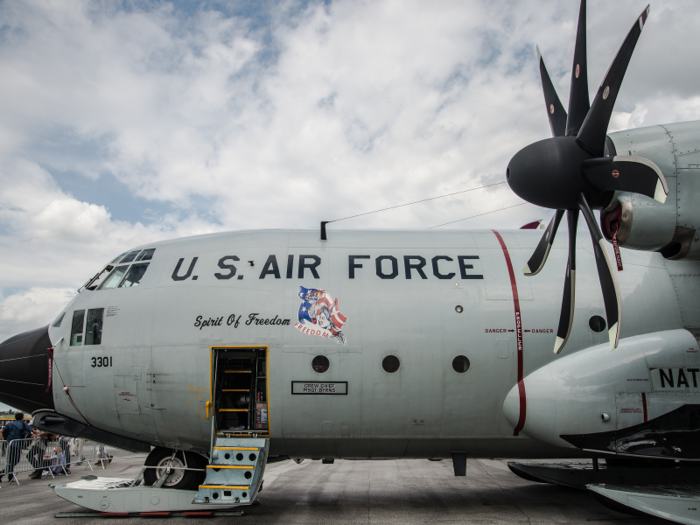
The skylight in the LC-130 is used for celestial navigation.
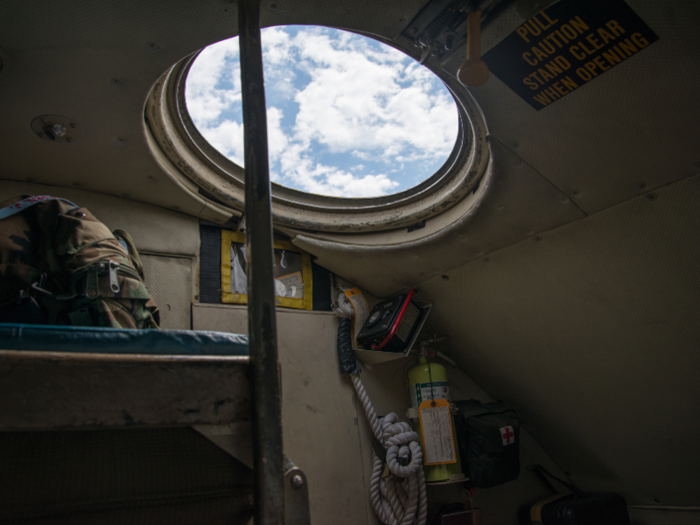
This aircraft has a four-person team in the cockpit, including a navigator. Visibility is often so bad on these polar missions that a navigator is essential. This team is the only branch of the Air Force to use celestial navigation, according to 2nd Lt. Daniel Urbanski of the New York Air National Guard's 139th Airlift Squadron.
"Old school is the way to go with this mission," Urbanski told INSIDER.
Two of the C-130J-30's four engines.
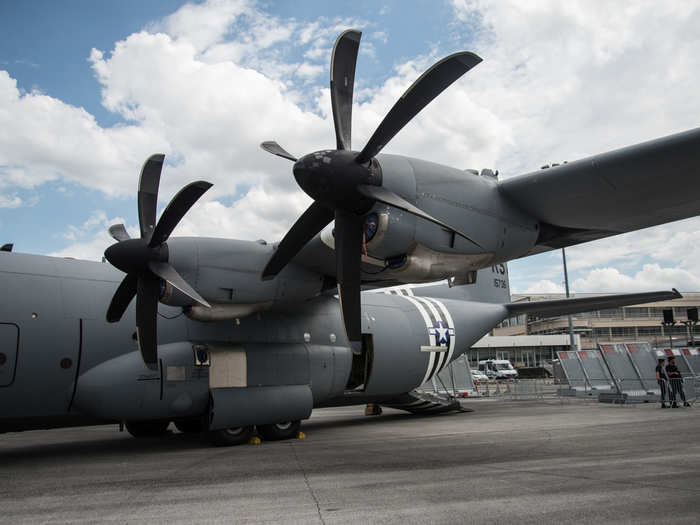
The aircrafts are made by Lockheed Martin, with Rolls Royce AE 2100D3 engines. The C-130J models can fly higher, climb faster, and require less distance for takeoff and landing.
Display glass and a projector show pilots the control panel. They don't need to take their eyes off the sky — it's all right in front of them.
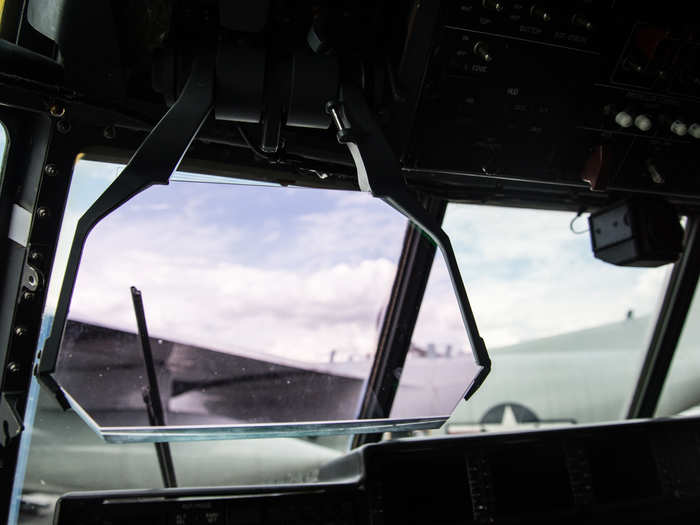
The cockpit display has color multifunctional LCD head-up displays, as well as a digital moving map display, a low-power color radar, and a dual inertial navigation system.
This is the projector that displays the instrument panel on the plane's windshield.
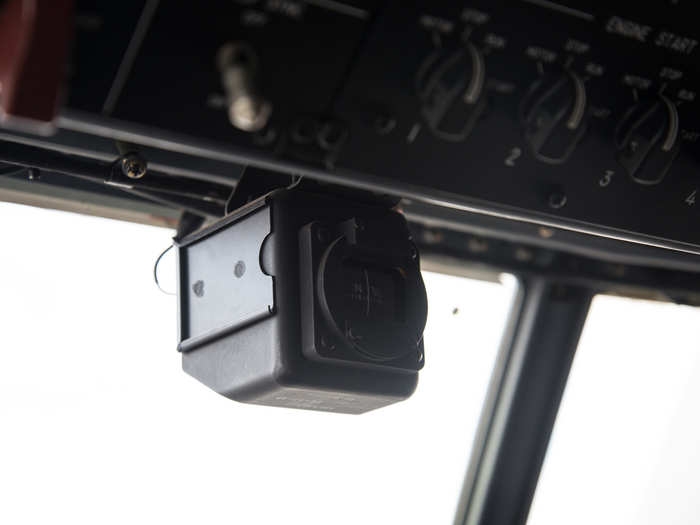
The C-130J-30's cockpit has high tech projected instrument panels for both the pilot and the co-pilot.
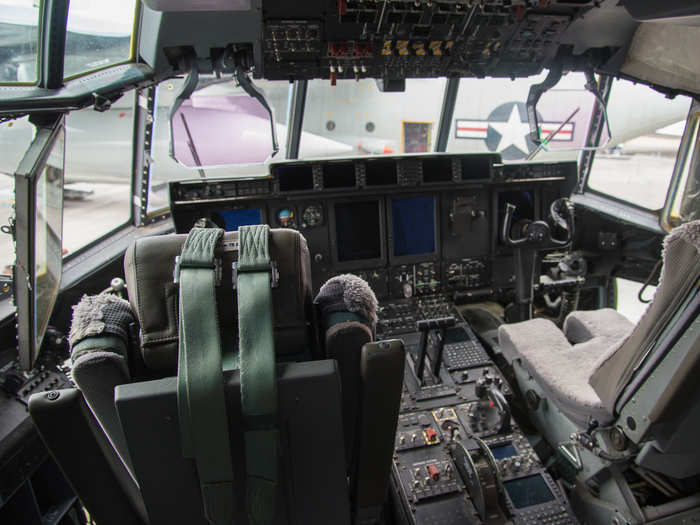
Controls of the C-130J-30.
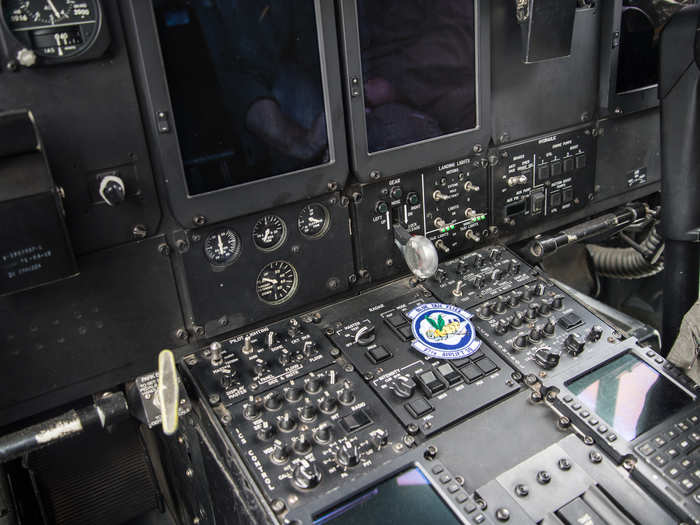
All C-130J variants, including the C-130J-30, are fully prepared for night operations. This flight station can be used with night vision goggles.
The C-130J-30 has analog instruments in case of electrical failure.
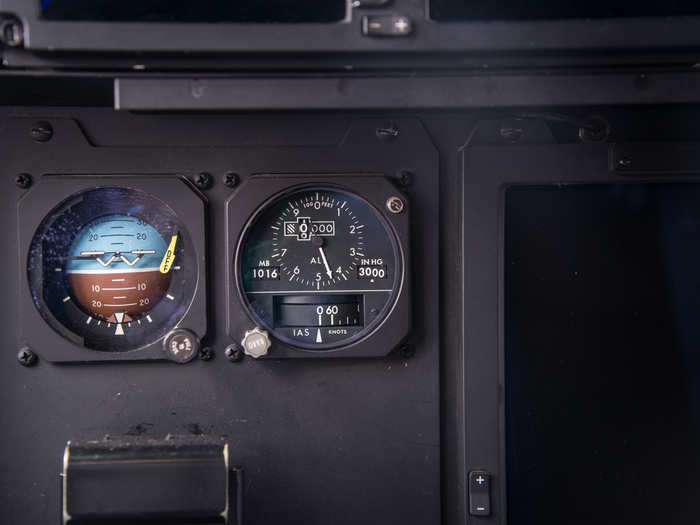
Rollers on the hold floor allow crew to load cargo — like a fire truck or an ATV — onto the C-130J-30 quickly.
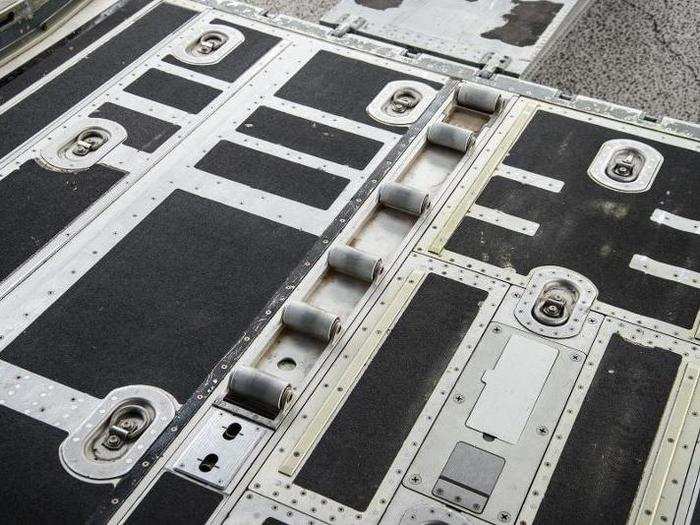
A C-130J variant, C-130J-SOF, is used for special operations forces (SOF) missions — it's used to infiltrate and exfiltrate SOF troops and supplies in challenging territory, according to Lockheed Martin. This variant can also be equipped with Hellfire missiles and a 30mm gun. It also has an aerial refueling station and an armored protection system.
The C-130J-30 hold can fit 92 combat-rigged paratroopers.
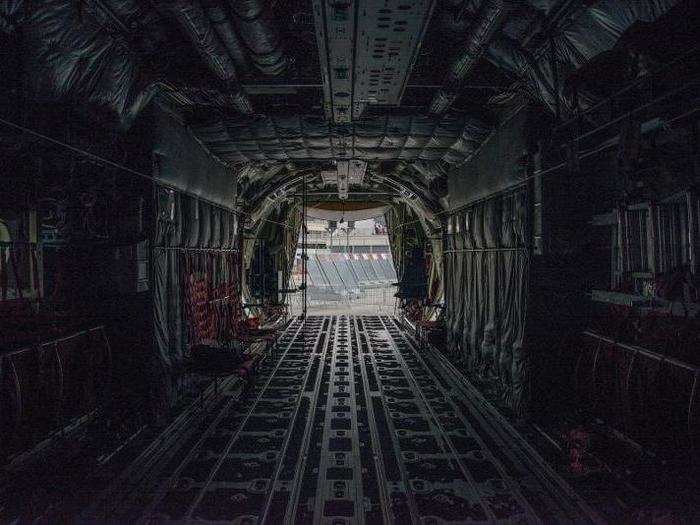
The C-130J-30 is 15 feet longer than the C-130J, giving it more capacity in the hold. Both the C-130J and the C-130J-30 can transport utility helicopters and six-wheeled armored vehicles.
The hold can fit up to 128 people (not in full combat gear, of course).
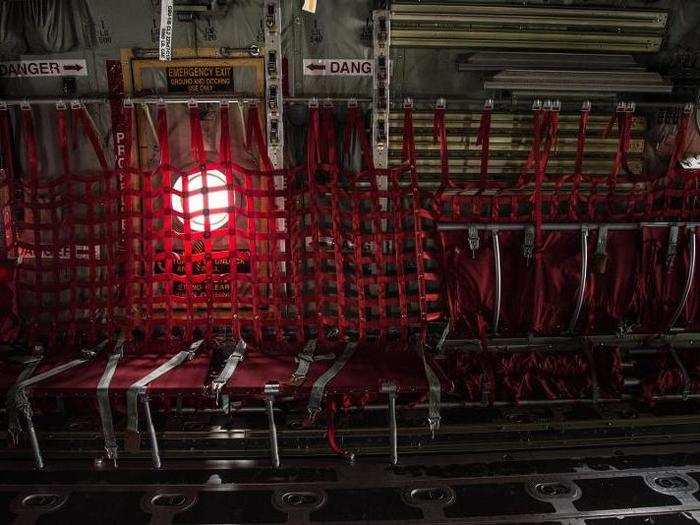
The hold can also be converted to crew beds, or can function as an "airborne emergency room," as Lockheed Martin advertising material calls it, and can fit up to 97 pallets with medical personnel. Although it's not possible to perform surgery on board, the crew flies at an altitude that allows patients to be stabilized.
The aircraft can fly up to 26,000 feet high with a 44,500 pound payload.
The light tells paratroopers when to jump.
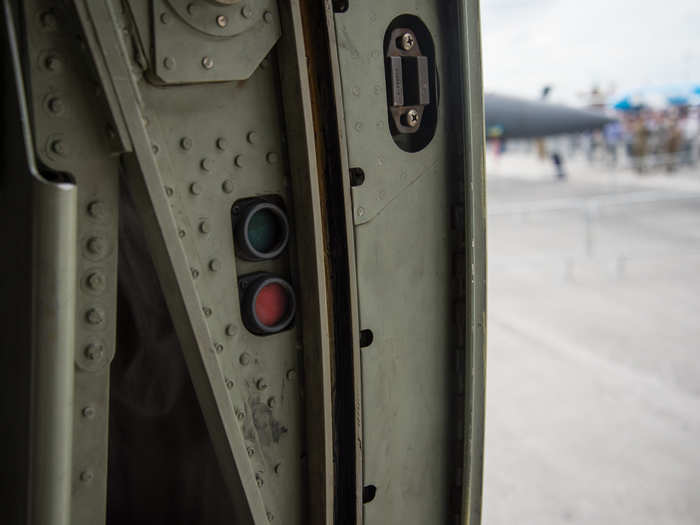
Here's the ramp into the hold. The C-130J30 is 15 feet longer than the C-130J.
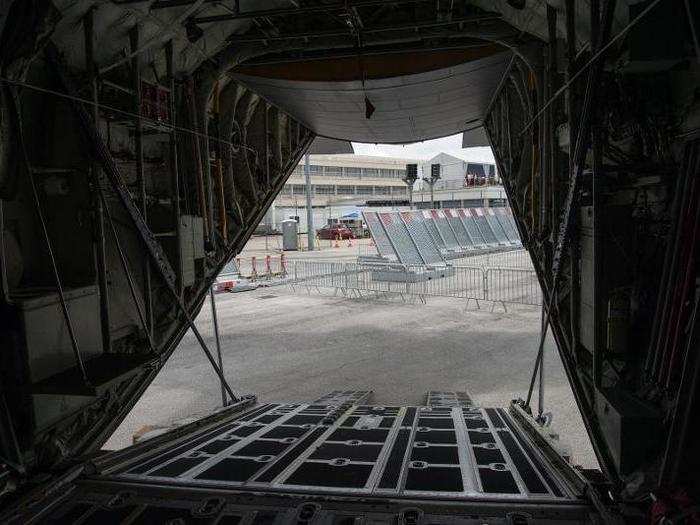
This particular aircraft recently completed a humanitarian mission in Mozambique, delivering cargo to aid groups for distribution. The C-130J variant can also be used to fight fire, with the capability to drop thousands of gallons of water or fire retardant "in seconds," according to Lockheed Martin.
A view into the C-130J-30's hold.
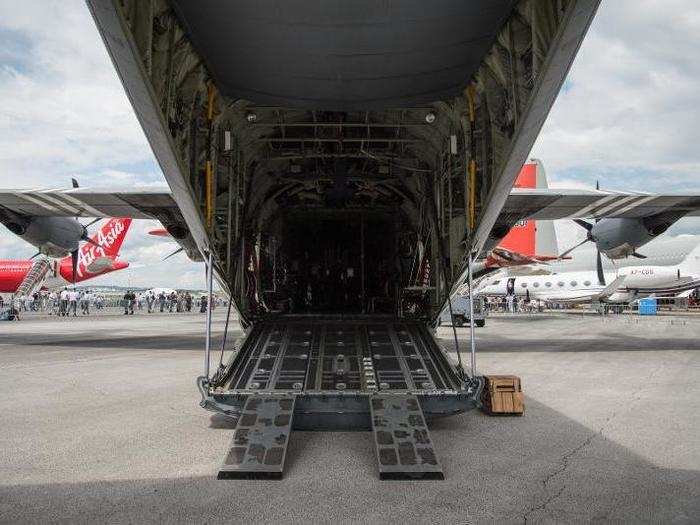
Legacy C-130 models and C-130Js delivered humanitarian aid to Puerto Rico after Hurricane Maria in 2017.
The tail of the C-130J30.
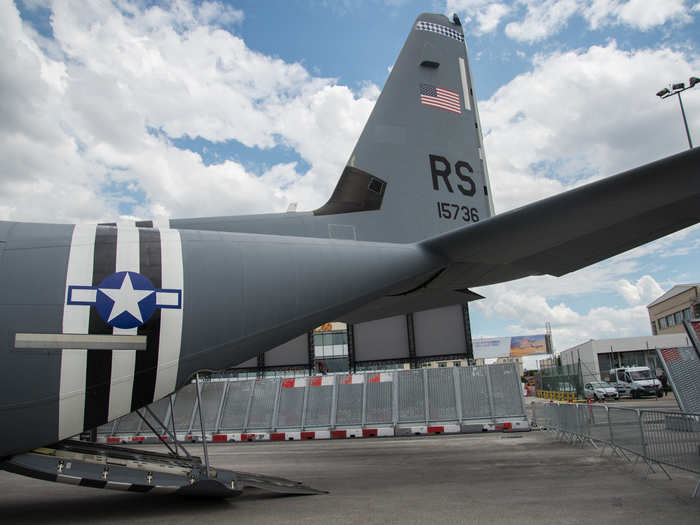
The tail carries the US flag, but the blue-and-white pattern of the Bavarian flag is visible just above it.
The side door and tail of the plane. This aircraft participated in D-Day commemorations, so black and white D-Day stripes are visible on the end of the aircraft.
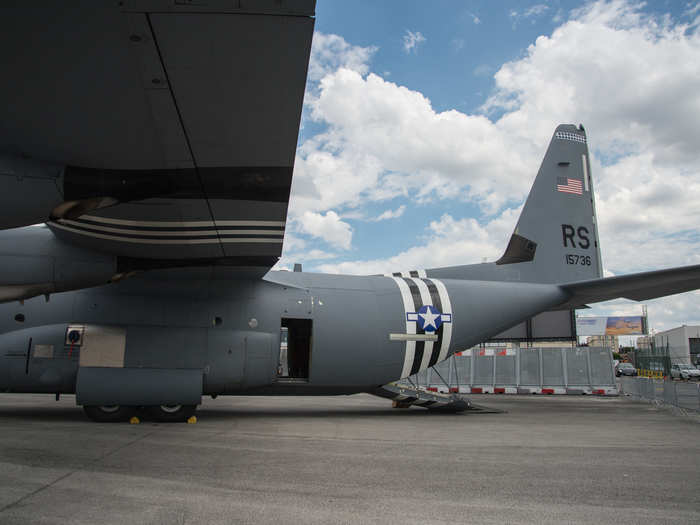
Another variant of the C-130J, the KC-130J, acts as a fuel tanker, refueling jets and helicopters in flight at a rate of 600 gallons per minute.
The nose of the C-130J-30.
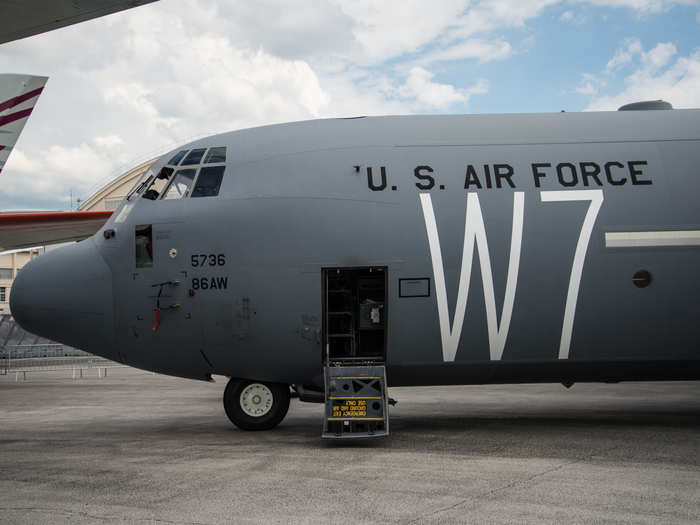
Advertisement